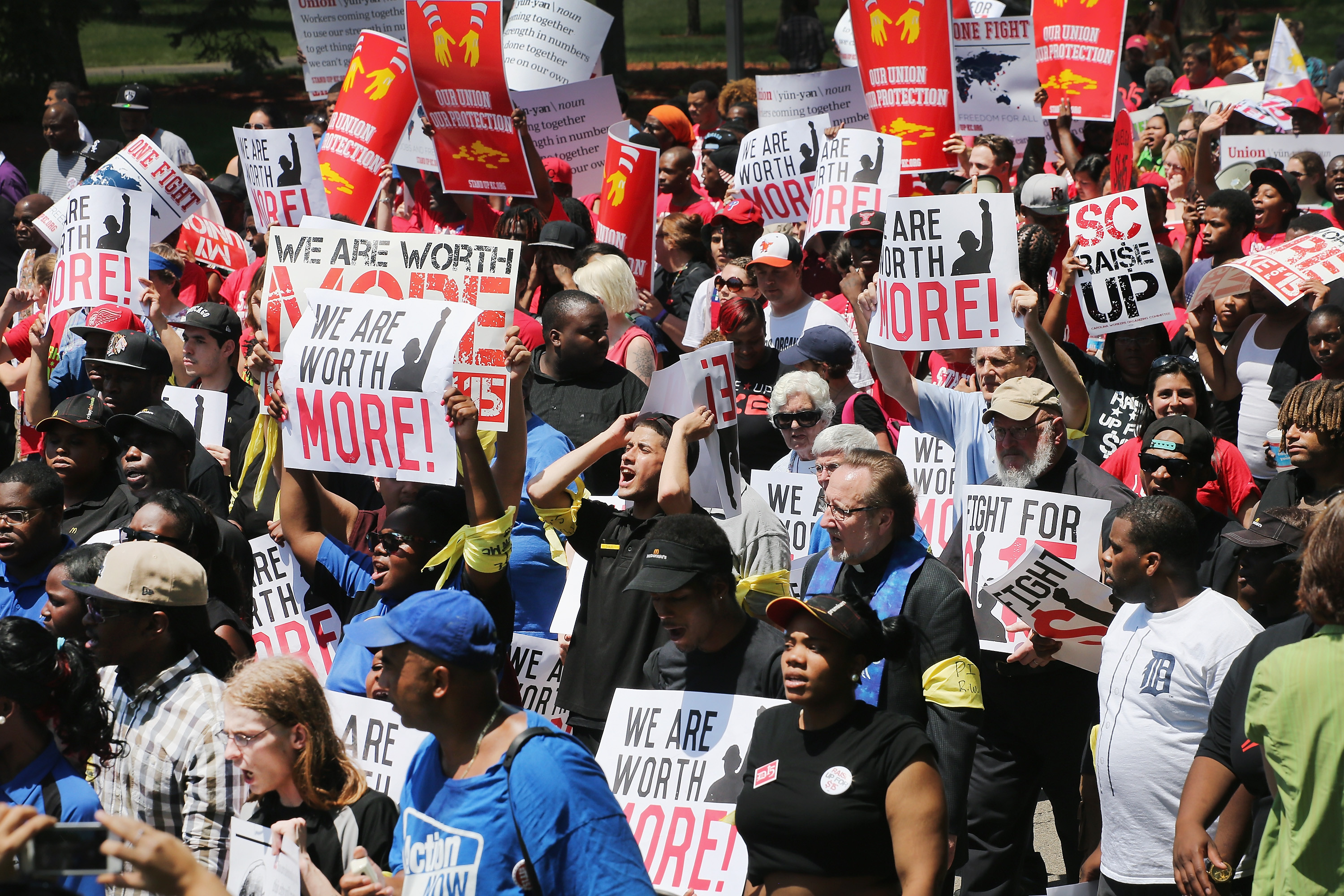July 1, 2014
The Fight for 15
(This article appears in the July/August 2014 issue of The American Postal Worker magazine.)
The “Fight for 15” movement took to the streets in more than 150 cities on May 15, as workers walked off the job to demand an increase in the minimum wage and the right to form a union.
Fast food jobs are no longer temporary or part-time positions held by teenagers; for many families it is the source of their entire livelihood, protesters pointed out.

“It is a career today,” said Alaro Rodriguez of People for Profit. “A lot of good-paying jobs have been shut down. A lot of people – adults and people with families – now have to work at fast food places,” he said in an interview with KIAH-TV.
Tammy Castellanos, a single mother, told Reuters at a protest near downtown Chicago, “I have done so much for Burger King and I don’t make enough to pay the rent.” After working at Burger King for a decade, she makes just $10 an hour.
Protesters Arrested
Six days after the rallies, 138 people were arrested as thousands of protesters rallied outside Chicago on May 21, the day of McDonald’s annual meeting of shareholders. The workers and supporters, including many members of the clergy, marched to McDonald’s corporate campus, where they were met by state police dressed in riot gear. They were asked to leave, but in an act of civil disobedience, some protesters refused and were taken into custody.
“We’re willing to get arrested because we are breadwinners: We’re mothers, we’re fathers, taking care of our families and McDonald’s pays us poverty wages,” said Jessica Davis. “We don’t think that’s acceptable when we work for a billion-dollar corporation.”
McDonald’s reported net profits of $5.6 billion in 2013. Davis has worked at the fast-food chain for four years and earns $8.98 per hour.
How It All Started
The “Fight for 15” campaign began in November 2012, when fast-food workers joined together to fight the corporate giants, including McDonald’s, Burger King and Wendy’s. Many in the industry do not earn enough to cover basic necessities, such as food and housing.
With the federal minimum wage stagnant at $7.25 an hour since July 2009, employees working 40 hours per week at the minimum wage earn approximately $15,000 a year.
Without a livable wage, 52 percent of fast-food workers are forced to depend on public assistance to provide for their families. Taxpayers carry the burden, paying $7 billion per year to make up the shortfall.
“This amounts to a subsidy by taxpayers for McDonald’s, Burger King and Wendy’s,” said APWU President Mark Dimondstein. “It’s an absolute disgrace!”
Results in the Making
The fight for an increase in the federal minimum wage is facing stiff opposition, but progress has been made in some areas.
In June, Seattle’s city council passed an ordinance to gradually increase the city’s minimum wage to $15 an hour. The increase begins on April 1, 2015, and will take between three to seven years to climb to $15 per hour, depending on the size of the business and the benefits provided to employees. In November 2013, Seattle’s smaller neighbor, the town of SeaTac, adopted a minimum wage of $15 per hour.
Similar steps toward raising the minimum wage to $15 an hour are also underway in San Francisco. In early May, the first public organizing meeting was held and preparations are being made to put the issue on the ballot for November’s election. Santa Fe, NM, San Jose, CA, and Washington, DC, have voted for minimum wages above the proposed $10.10 federal plan that is currently stalled in Congress.



